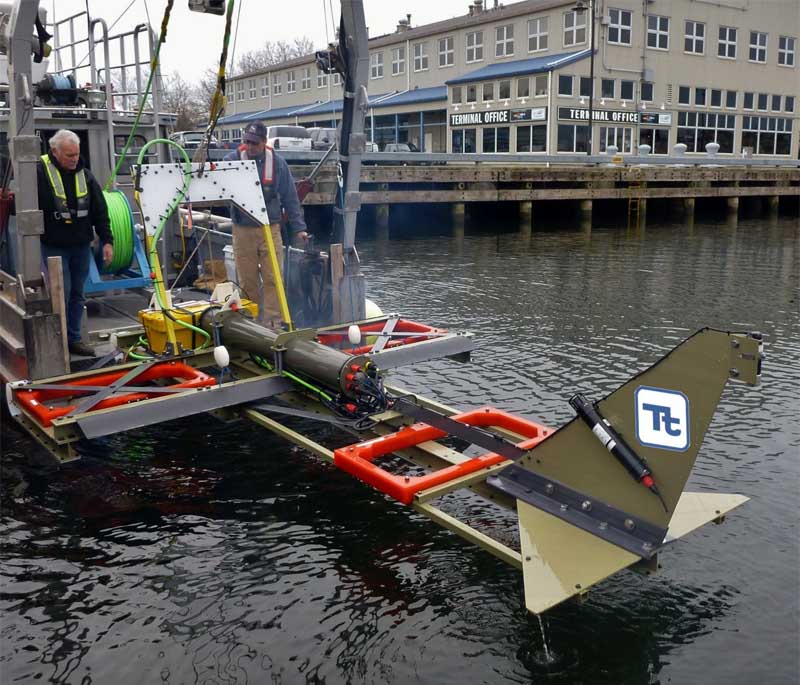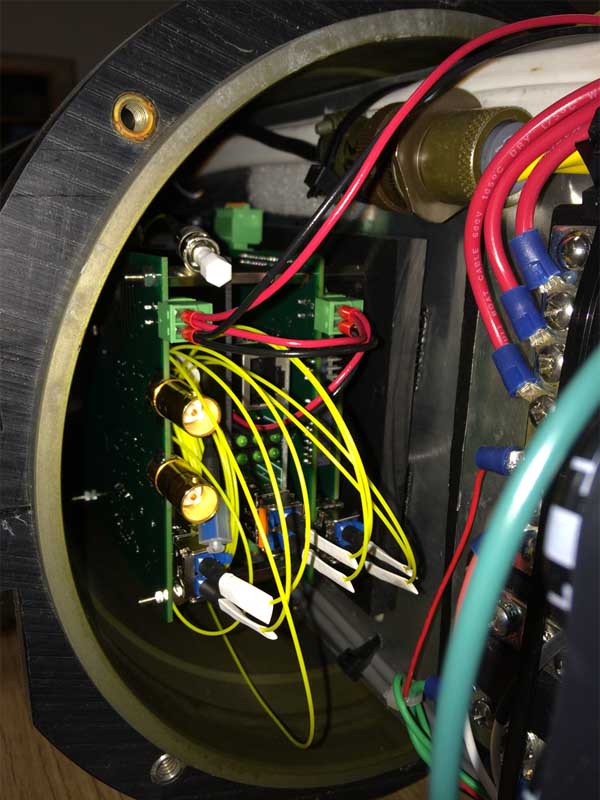October - Squeezing More Bandwidth into Smaller Space for HD Video and Data-hungry Submersible Applications
By: Marla Isenstein, SeaView Systems Marketing Manager
Challenges
For many towed remotely operated vehicles (ROVs), towed sleds, and general submersible ROV applications, the value and often the success or failure of the vehicle’s deployment are based largely on the quality of the data that can be measured and sent back to the operator or logging system on the surface. For plenty of applications, the bottleneck is the multiplexer that gets this critical data from the cameras and sensors on the ROV into the umbilical’s fiber data stream.
For a typical deployment, an ROV might be limited to three standard definition cameras with some serial data. Ethernet, a data transmission protocol that is becoming ubiquitous especially with multibeam sonars, requires a second card.
In many instances, deployments of off-the-shelf as well as custom-designed ROVs were bumping up against communications electronics limitations that could be as demanding as the rigors of deepwater.
Solutions
A new suite of multiplexers and data converters from SeaView Systems, the SVS-509 OmniData Multiplexer,breaks through this bottleneck to give ROVs an unprecedented level of flexibility in terms of bandwidth for a given space while increasing the options for the sort of sensors that can be attached to the smallest of ROVs to workclassmachines, even offering an upgradepath for equipment that predatesmodern-day bandwidth demands.
What the SeaView multiplexerprovides is a handy set of video,serial, and Ethernet ports and timingtriggers—all on one card thatenables flexible sensor deploymenton many platforms. In the case of very high demand applications,SeaView’s standard multiplexer canbe optically linked with their gigabitEthernet converter board and a dual-channel HD-SDI board in order to transmit all these data on one single mode fiber. The combination of all three cards constitutes the SVS-509. The package enablesplug-and-play integration for manycurrently available subsea devices,all in a very compact package.
The SeaView SVS-509, based on the industry standard PC-104 formfactor, can be deployed as a directreplacement or upgrade in thenumerous existing ROV systems thatuse the same form factor, opening upa range of improved sensor capabilities for existing ROV hardware.

Tetra Tech’s TEMA tow rig is small and lightweight for easy deployment from a vessel of opportunity, yet packs a big data punch thanks to the SeaView multiplexer.
“We didn’t set out to design a fresh card stack,”said Matthew Cook, head of SeaView. “But there justwasn’t anything out there that addressed the requirements of some of our deployments. We needed a multiplexer that would enable us to hang two HD cameras,multibeam sonars, tooling cameras, and a Christmastree load of other sensors, and fit it all into a small pressure cylinder.”
Rather than building up a single-purpose solution,they decided to build the Swiss army knife of multiplexers. “Once we’d designed to address the bandwidth issue, it was simply a matter of deciding whichports would be the most useful for the broadest rangeof applications,” said Cook. “And, with the proliferation of multibeam sonars and other high bandwidthdevices such as HD cameras, we saw that this flexibility would be extremely helpful going forward.” To that end, they also included onboard RS485-232 conversion, which saved the pain of needing extra hardwarefor that conversion.
In the course of drafting the design, SeaView sawthat the PC-104 form factor would make this the obvious choice for upgrading a veritable boatload of existingequipment that could take advantage of either the higher-definition video or additional sensor possibilities the multiplexer enabled.
The Seaview multiplexer board stack fits neatly into the tight confines of Tetra Tech’s TEMA bottle housing.
The result, the SeaView Systems SVS-509 OmniData Multiplexer consists of a suite of three optical video and data transmission cards built to the PC104 form factor with a flexible set of ports: a video anddata multiplexer (with multiple SD video channels, RS485, RS-232 and high speed triggers), a gigabit Ethernetto fiber converter, and an HDI-SDI fiber converter.
“Not every application requires HD and all the extrasensors,” said Cook, “but once you’ve had the luxury ofthat kind of data, it’s hard to imagine trying to get along without it.”
Application
An early customer for the product was Tetra Tech, a leading underwater survey company. Their Survey and Mapping Group has deployed the SeaView stack as part of their Towed Electromagnetic Array (TEMA), a towsled that performs undersea surveys primarily for the detection and mapping of unexploded ordnance. Tetra Tech exploited the improved bandwidth and diverse sensor possibilities, enabling the TEMA sled to readily support a wide range of additional activities, including: -Cable and pipeline route surveys; -Pipeline/cable location and O&M monitoring; -Search, salvage, and debris surveys; and -Archaeological/cultural surveys.
The design restraints of Tetra Tech’s TEMA sled required it to be small enough to be rapidly transported and deployed from a vessel of opportunity while still able to provide a comprehensive suite of sensors, lights,and cameras. The specification demand for very high bandwidth data transfer in a small package presented Tetra Tech with a challenging underwater engineering problem—and SeaView’s multiplexer was a perfect fit.
A World of Possibilities
“An ROV or tow sled is essentially a taxi taking sensors and tools to the work site. If you’re going to the expense to put a vehicle into the water, you want to capture as much data of the best quality you can,” said Cook. By making it less expensive than the previous generation multiplexer, SeaView has made it a win-win, where you get more for less.”
“It’s a really great time to be involved in ROV technologies,” Cook continued. “The number of different applications for the transmission of subsea data never ceases to amaze me and is growing every day. It’s really satisfying to see our products expand these capabilities and address our customers’ most demanding requirements.”
“The ability to multiplex up live HD video, still DSLR images, as well as all the data from our altimeters, temperature sensors, and electromagnetic systems—all up one single-mode fiber cable—made the SeaView multiplexer the only choice for us,” said Richard Funk, senior geophysicist for Tetra Tech and designer of the TEMA vehicle.
For more information, visit www.seaviewsystems.com or www.tetratech.com.


